Hey Pool owners, in this video we’re going to show you how to identify and fix low water pressure in your pool. Some symptoms of low water pressure could include:
- Weak return jets
- Water features that have stopped working or have low flow
- Sluggish pool cleaner
- Low flow warnings from salt systems, and heaters
To understand why your water pressure is low, you’ll first need a basic understanding of how your pool operates. The plumbing system has two sides, the suction side that comes before the pump, and the pressure side that comes after the pump.
The pump creates a vacuum which pulls the water from the pool and pushes the water back to the pool through a filter. A problem on either the suction or pressure side can result in low water pressure. We’ll cover both suction and pressure side problems in this video.
Suction Side Problem Areas

The first thing to check the water level of the pool. If your water level is below the skimmer, your pump will suck in air and produce low water pressure. If It sucks in too much air the pump may lose prime all together. To fix this problem, make sure that the water level is at least halfway up the skimmer door.
Next, clean your skimmer basket. If your skimmer basket is full of debris, you’re effectively shutting off the pipe between the skimmer and the pump resulting in low flow. To fix this, simply clean and remove all the debris from the basket.
Another basket to check is the pump strainer. Like the skimmer basket, a full pump basket will decrease the flow to the pump. Again, empty any debris that’s been collected in the pump basket.
An often overlooked cause of weak flow is a clogged impeller. If your impeller is obstructed, the suction is decreased which reduces water flow through your system. To fix this, you’ll need to clean out your impeller. Check out the description below to see our guide on cleaning out pump impellers.
Suction side air leaks are another source of low water pressure. If you have an air leak, you’ll usually see air bubbles coming out of the return jets, or building up in the pump strainer.
A big enough air leak will cause the pump to lose its prime.
If it’s a smaller leak, air will be sucked in and start to collect at the top of the filter tank. After some time, usually, a few hours, air pressure at the top of the tank will create enough back pressure to reduce the flow of water significantly. When the pump is shut off, this back pressure will cause the water in the suction pipe to surge back. Sometimes shooting a column of water up through the skimmer.
Suction leaks at the pump are usually going to be found near the lid, drain plugs, and inlet fitting. Replace any o-rings that look deteriorated, stretched, or broken. If you don’t have an air leak at the pump, check the diverter valves, unions, and fittings before the pump. For tips on how to find these leaks, check out our video titled, “How To find suction side air leaks in a pool”.
Another cause of low water pressure could be a clogged plumbing line. A clogged pipe from the skimmer, suction line, or main drain reduces the amount of water to the pump. To free a clogged line, try feeding a fish tape through the plumbing to dislodge any debris.
Another helpful tool used for this application is a plumbing bladder. Simply hook up a garden hose to the bladder and slide it into the skimmer or suction line. Turn on the water and the bladder will expand and blow out the lines.
Pressure Side Problem Areas

A dirty filter will restrict water flow through your system. A high PSI reading on your filter’s pressure gauge is usually a good indicator that your filter needs cleaning. Sand and DE filters require backwashing, while cartridge filters need to be hosed down. DE grids and cartridges can also be soaked in a filter cleaner to remove oils and grease that aren’t removed during normal cleaning.
If the PSI remains high and you still have low water pressure after cleaning the filter, the filter media may need to be replaced, and by media we mean the sand, DE grids, or cartridges.
Another source of low water pressure can be pressure side water leaks. Water leaks around the pool equipment are generally small and won’t cause a significant drop in pressure. However, a water leak in your underground pool plumbing could reduce the flow from your return jets.
If you need to regularly add water to your pool, or the ground around your pool stays moist, then there’s a possibility that you have a pressure side water leak. We recommend hiring a professional plumber to fix underground plumbing.
Another problem that could cause low water pressure in your pool is a pump that is too small. If your pump size was calculated for your initial pool system, and you have recently added additional water features, installed a salt system, installed a heater or heat pump, or moved your pump further away from the pool, you may have exceeded the pump’s ability to supply the gallons per minute required for adequate flow.
In order to fix this problem, you may need to shut off some of your water features or upgrade your pump’s motor and impeller.
That covers the basics of identifying and fixing low water pressure in your pool. Feel free to leave any questions or comments down below and don’t forget to visit us over at INYOpools.com for all your swimming pool needs.

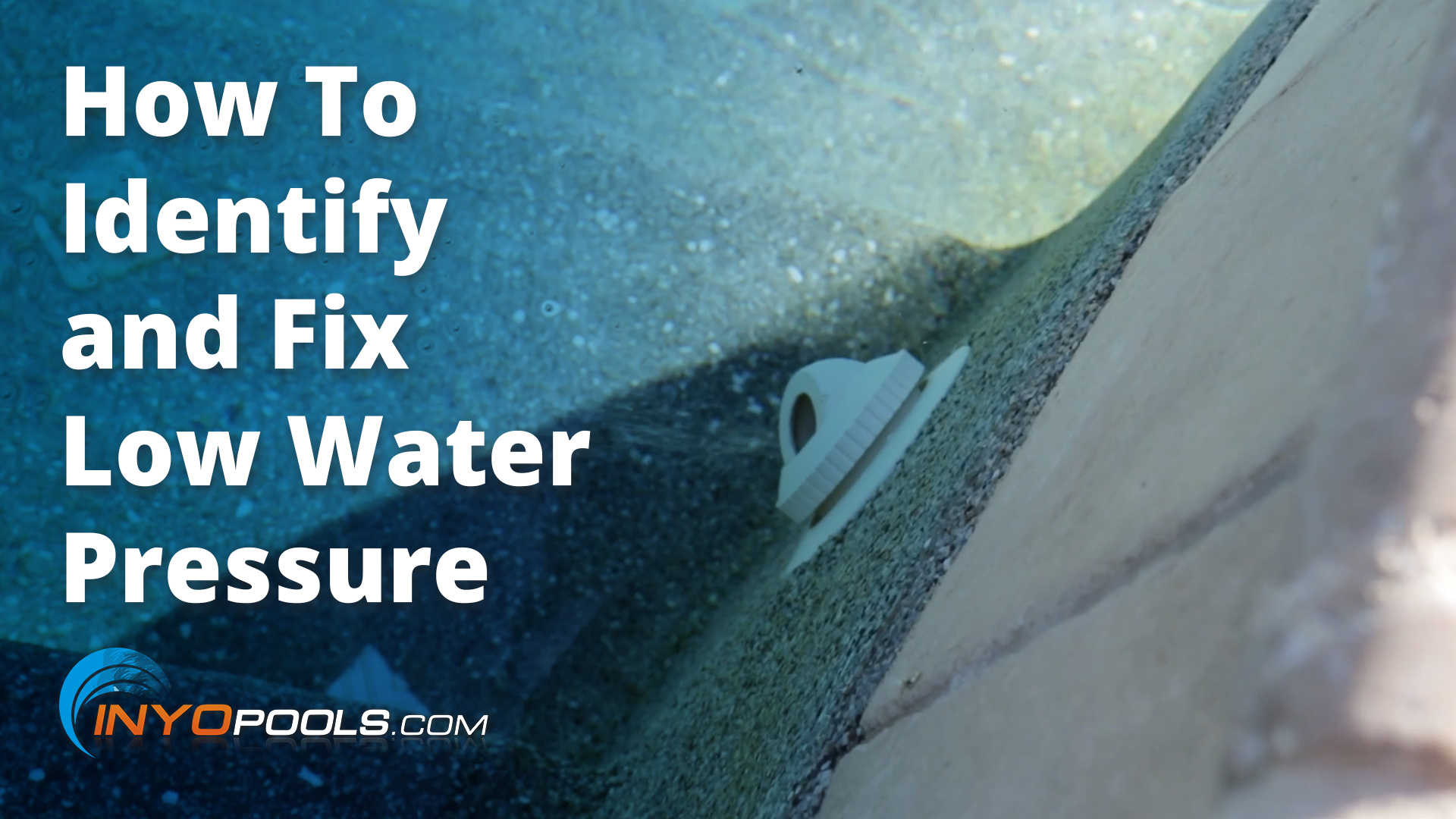
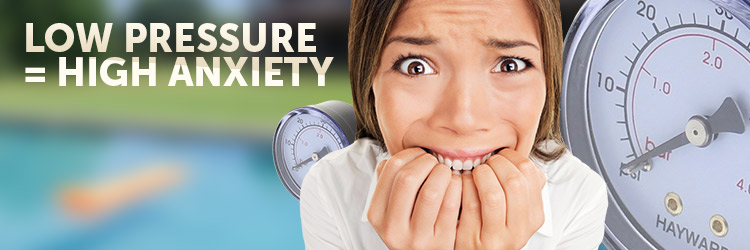
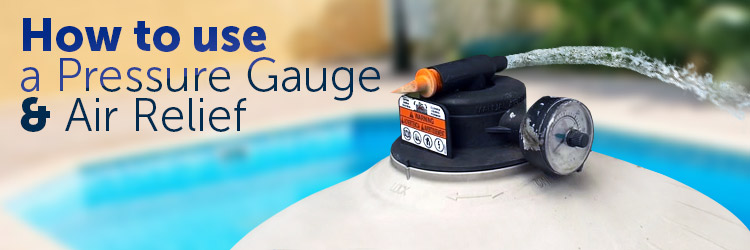
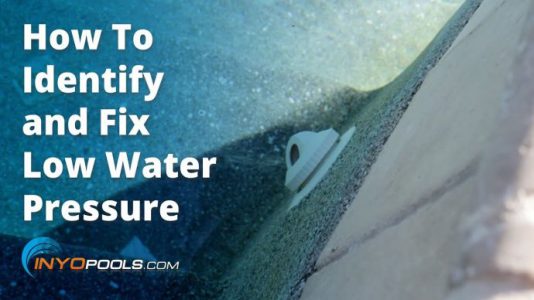
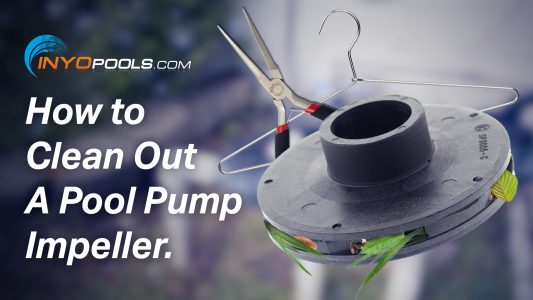






Pool pumps don’t suck. They create a low pressure, lower than atmospheric, and atmospheric pressure pushes the water into the low pressure area in the pump. Thus, moving water from the bottom of the pool or the skimmers is equal, minus pipe restrictions.
Thank you for explaining how a vacuum is created and exerts force. We know how it works but in the pool industry and common parlance, the terms “suck” and “suction” explain the phenomena in fewer, more concise words.
MR. SIMMONS,
Have you installed any DC motor-pump units?
DC heater units?
Powered by solar ?
I have not installed a DC pool motor. There are DC pool cleaner motors I have installed but I presume we are not counting those.
Ok, thanks
In the picture. . . is the hole below the backwash position?
The whole moves to where you turn the handle. In the picture, the hole is positioned until the FILTER setting.
I had the handle in the Backwash Position when I took it apart.
How does water flow through a 6 position diverter? I recently purchased a new diverter. . . .now I’m wondering what position the new diverter should be in so that the handle points in the correct position to function correctly?
The hole in the diverter should be across from the handle, as you can see in this picture below. Then, the valve cover (the thing with the round label) has a notch, arrow, or some kind of mark that needs to be lined up to another mark on the body of the valve. Lining up that mark will ensure the water will be routed where you want it when selecting a setting.
Wow, so many reasons why your pool could have low pressure! The leaks one is especially interesting to me, because they are so hard to notice and will consume so much of your water bill. People usually don’t want to fix leaks because it’s “only a small thing, just a few drops of water”, but that couldn’t be farther from the truth. Leaks can cause underground voids that can crack the pool shell, something that is really expensive to fix… and now I also find out it can lower your pool pressure! Definitely getting leak detection is very important.
Source for damages leaks can cause: https://oceanspoolleakdetection.net/
Recently bough a pool vacuum, hooked it up to my pump. We had to prime the pump, however now there is water coming out of the lid to the pump. Could this be a bad o ring? Pool, pump was just bought a week ago but we are newbies. TIA
My water jets have stopped working and the pressure has doubled at the pressure gauge
My sand filter is only 1 yr old and my heater is the same age.
A pressure test held the line pressure.
A temporarylinebypassed thé jets and went directly to the pool and works fine although the pressure is still very high.
The pump works fine
There are. no water leaks
What can be wrong with the jets
Clean the filter
My pump is working backwards. The side that’s suppose to be pumping water back into the pool is actually sucking water in instead of out. Not sure what’s wrong. Just bought the 16ft summer waves elite pool
You have the hoses connected backwards
Is it a 3phase motor? If so just reverse the phase a and phase c lines. A three phase motor can run backwards.
The only other cause could be that the pump was installed backwards.
the pipes attached to the pump have been reversed
I am leaning towards the “hoses are backward” camp. Summer waves don’t offer a three-phase motor option as they mainly deal with small to medium above ground pools.